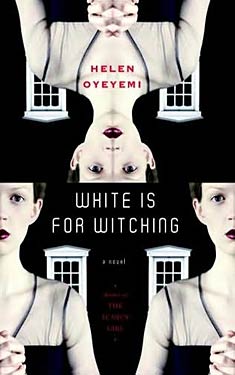WoGF Review: White is for Witching by Helen Oyeyemi
 Kristine N. (krizzaro) is a climate scientist and mom to two children. She’s been reading SF and fantasy as long as she can remember and hopes to instill the same love for fine literature in her impressionable offspring. While omnivorous in her reading, she has a particular fondness for dystopia, epic fantasy, and anything written by Connie Willis, Kim Stanley Robinson, and Neal Stephenson. Kristine blogs about reading at writing on her site Library Creature.
Kristine N. (krizzaro) is a climate scientist and mom to two children. She’s been reading SF and fantasy as long as she can remember and hopes to instill the same love for fine literature in her impressionable offspring. While omnivorous in her reading, she has a particular fondness for dystopia, epic fantasy, and anything written by Connie Willis, Kim Stanley Robinson, and Neal Stephenson. Kristine blogs about reading at writing on her site Library Creature.
WARNING: There is a SPOILER after the fold. If you have not read this book and don’t want a plot point revealed, do not read beyond the second paragraph.
I am not into literary novels. For that reason alone, I probably should have avoided this book. White is for Witching is a very literary read, which translates into beautifully written but meandering, lacking in plot, and full of characters who aren’t necessarily interesting or sympathetic. In fact, the most sympathetic characters are the minor characters.
The story (such as it is) follows Miri and her twin brother, Elliot, who are mourning after the death of their mother, Lily. Miri, who had pica to begin with, totally loses it after her mother’s death and basically starves herself stupid. Very stupid. Not stupid enough to keep her out of Cambridge (?!?!), but stupid nonetheless. I suppose the book could be seen as the chronicle of a mentally unbalanced woman killing herself through starvation and dragging loved ones down with her. It’s not a very pleasant arc, and the inciting incident isn’t quite satisfactory, but again, it’s literary fiction. Things don’t apparently have to make sense here. They often don’t.
WoGF Review: Those Who Hunt the Night by Barbara Hambly
 Carrie Naughton (Bookkeeper) is a book writer who moonlights as a bookkeeper even though she’s mostly a book reader. She likes to eat breakfast for every meal, drives a purple car, and listens to Roger Waters almost exclusively during tax season.
Carrie Naughton (Bookkeeper) is a book writer who moonlights as a bookkeeper even though she’s mostly a book reader. She likes to eat breakfast for every meal, drives a purple car, and listens to Roger Waters almost exclusively during tax season.
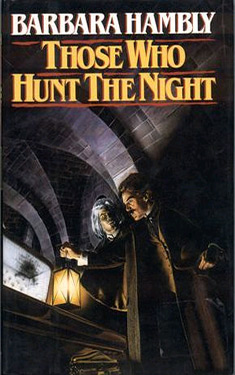 YYEEESSSS! YES! This is what I want to read when I want to read a vampire novel.
YYEEESSSS! YES! This is what I want to read when I want to read a vampire novel.
And get me: I’m addicted to The Vampire Diaries on the CW, I read Anne Rice when I was in high school, and I still consider Stoker’s Dracula to be one of the finest novels ever written (and I can’t stand epistolary novels!). Near Dark kicks Zero Dark Thirty ass in Kathryn Bigelow’s directorial canon, in my opinion, and if you haven’t read Anne Billson’s novel Suckers, you need to immediately. Hopefully this all suffices to establish my street cred as vampire novel evaluator. Notice I’m not mentioning Stephenie whatshername Twilight here. At least, I’m trying not to.
First, Barbara Hambly is a thinking woman’s writer. Because yes, there are nonthinking women out there. I should know, I am a nonthinking woman sometimes. I read the first Sookie Stackhouse novel (cringe) and ditched the books for HBO’s True Blood adaptation so I could salivate over Alexander Skarsgaard. And there’s of course Anita Blake, Vampire Hunter, who is apparently supersexycool (ok, I’m not really sure if she’s that because I haven’t read any Laurell K. Hamilton, but I’m sure I’d prefer Anita Blake over Bella and Edward). There’s now enough vampteen and hip-chick vampire hunter lit out there to make a bookstack that would stretch from here to the Wraith mothership in the Pegasus Galaxy (yes I’m referencing Stargate Atlantis here, and I’m not ashamed). Speaking of the Wraith, what you get with Hambly’s novels is scary vampires. The ones who want you dead because you’re an inferior humanoid food source. The kind of vampires Stoker had in mind.
The Strain, by Del Toro and Hogan
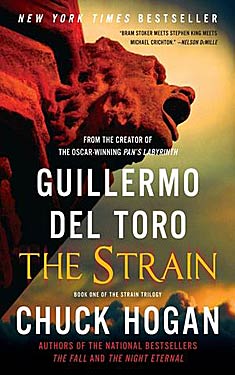 Every vampire story writer wants to make the genre his own, for good or ill. There seems to be an unspoken competition as to who can come up with the most interesting “rules” for the nature of vampires, particularly their strengths and weaknesses. Often this just gets silly (sparkles, anyone?), but occasionally it gets fascinating, and the choices an author makes sometimes has a deeper philosophy at its root. Why else would so many post-religious authors make a point of laughing at characters who think that vampires will be afraid of crosses? Why else would some writers re-imagine vampirism as a biological plague instead of a more spiritual threat? The authors of The Strain make both these changes, and also re-think the bodily structure of the vampire while they’re at it. No longer a long-fanged pretty boy with mesmerizing eyes, the vampire here drinks its victim’s blood through a sucker in its overgrown tongue and spreads its curse through virus-like worms.
Every vampire story writer wants to make the genre his own, for good or ill. There seems to be an unspoken competition as to who can come up with the most interesting “rules” for the nature of vampires, particularly their strengths and weaknesses. Often this just gets silly (sparkles, anyone?), but occasionally it gets fascinating, and the choices an author makes sometimes has a deeper philosophy at its root. Why else would so many post-religious authors make a point of laughing at characters who think that vampires will be afraid of crosses? Why else would some writers re-imagine vampirism as a biological plague instead of a more spiritual threat? The authors of The Strain make both these changes, and also re-think the bodily structure of the vampire while they’re at it. No longer a long-fanged pretty boy with mesmerizing eyes, the vampire here drinks its victim’s blood through a sucker in its overgrown tongue and spreads its curse through virus-like worms.
This is film director Guillermo del Toro’s first novel, though not professional novelist Chuck Hogan’s first by a long shot. It’s not entirely clear which co-author took what responsibilities when writing this story, but my suspicion is that del Toro wrote the outline while Hogan wrote the prose. Based on this assumption, I have to place the blame for many of The Strain‘s rough patches on Hogan. Too many times Hogan showcases the research he put into this novel in excruciating detail. While the CDC workers vest themselves in preparation for exploring the dead airplane which sets off this unfortunate chain of events, the prose describes every single part of their containment suit in the most boorish of details. Later during an eclipse, the prose is sure to remind us that a solar eclipse is more properly termed an “occultation,” and proceeds to explain how odd it is that the sun’s corona is much hotter than its surface. None of this really matters to the story, and it feels like filler to keep the reader from noticing how thin the plot is.
World War Z Movie Trailer: These Zombies are Fast but Brad Pitt is Faster
Seems like there has been a lot of negative talk about this film. I suppose anytime you have re-shoots and revisions and you miss your opening date you’re going to get a lot of haters but the trailer looks pretty cool. The zombies are OMG fast and they swarm over each other like ants which is really terrifying to think about. I mean, damn! I’ve been ready for the slow zombie apocalypse for years but I doubt my preparations are enough to handle that!
What do you think? Have you read World War Z by Max Brooks? Does the trailer look like the book at all? It’s been tagged as read 39 times and has garnered a sold 4 star average from 24 ratings here on WWEnd. Are you concerned that Hollywood has screwed the pooch again?
The Hellbound Heart by Clive Barker
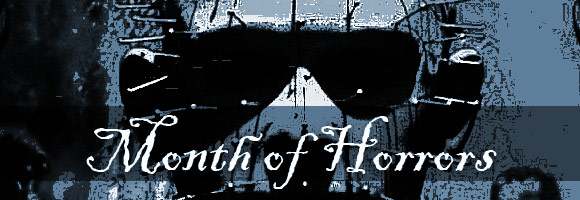
“The doorway was even now opening to pleasures no more than a handful of humans had ever known existed, much less tasted—pleasures which would redefine the parameters of sensation, which would release him from the dull round of desire, seduction and disappointment that had dogged him from late adolescence.”
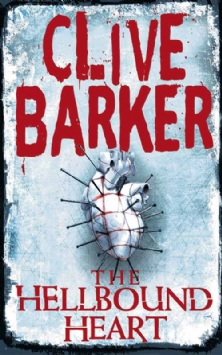 It’s not often one picks up a modern splatterpunk book and finds within it a morality tale, especially a tale so opposed to the moral atmosphere of the day. At least, I assume this doesn’t happen often, since The Hellbound Heart is the only splatterpunk story I can ever remember reading. The quote above is about the novella’s antagonist Frank, a hedonist who has spent all of his adult life in search of the most extreme pleasures. One can only enjoy so many drugs and prostitutes before the pleasure becomes dull and repetitive, so Frank seeks out new avenues through the occult. He hears of the Lament Configuration, a puzzle box which, if opened, will open a door to the world of the Cenobites, a perverse religious order dedicated to unworldly pleasure. After performing numerous favors for unsavory individuals, he finally gains possession of the box, and brings it home to England to open it. Unfortunately for Frank, when the Cenobites finally appear, their mutilated bodies indicate that their “pleasure” is actually found in pain, that they are demonic sadomasochists who intend to subject Frank to an eternity of flesh-destroying fun. The rest of the story follows his brother’s family and social circle as Frank attempts to return to Earth by corrupting those he left behind.
It’s not often one picks up a modern splatterpunk book and finds within it a morality tale, especially a tale so opposed to the moral atmosphere of the day. At least, I assume this doesn’t happen often, since The Hellbound Heart is the only splatterpunk story I can ever remember reading. The quote above is about the novella’s antagonist Frank, a hedonist who has spent all of his adult life in search of the most extreme pleasures. One can only enjoy so many drugs and prostitutes before the pleasure becomes dull and repetitive, so Frank seeks out new avenues through the occult. He hears of the Lament Configuration, a puzzle box which, if opened, will open a door to the world of the Cenobites, a perverse religious order dedicated to unworldly pleasure. After performing numerous favors for unsavory individuals, he finally gains possession of the box, and brings it home to England to open it. Unfortunately for Frank, when the Cenobites finally appear, their mutilated bodies indicate that their “pleasure” is actually found in pain, that they are demonic sadomasochists who intend to subject Frank to an eternity of flesh-destroying fun. The rest of the story follows his brother’s family and social circle as Frank attempts to return to Earth by corrupting those he left behind.
Frankenstein’s Forefathers

We all know that Frankenstein’s monster was brought to life by powerful bolt of lightening. The image of him strapped to his iron bed as electricity courses through his body is an iconic Hollywood image. Never mind that such never transpired in Mary Shelley’s 1818 novel. For many of us, that is how he was born, whatever the book says. If, however, you were dismayed at the absence of such an origin the original Frankenstein, don’t be. The Creature may very well have been born from a thunderclap.
 It was the summer of 1816 when an eighteen-year-old Mary Shelley traveled with her husband, the incomparable Percy Blysshe Shelley, to Lake Geneva, where they rented a house adjacent to their friend, Lord Byron. The three of them were joined by Byron’s personal nurse (and likely lover), John Polidori. This was the Year of No Summer, when the Mt. Tambora eruption (the most powerful in recorded history) released so much ash into the atmosphere that temperatures plummeted in many areas of the world. One of the hardest hit areas was Lake Geneva, where it “proved a wet, ungenial summer”, according to Mrs. Shelley, “and incessant rain often confined us for days to the house.” So, instead of spending their “pleasant hours on the lake, or wandering on its shores,” as they had done before Tambora’s ash blotted out the sun, they plunged themselves into (what else?) books:
It was the summer of 1816 when an eighteen-year-old Mary Shelley traveled with her husband, the incomparable Percy Blysshe Shelley, to Lake Geneva, where they rented a house adjacent to their friend, Lord Byron. The three of them were joined by Byron’s personal nurse (and likely lover), John Polidori. This was the Year of No Summer, when the Mt. Tambora eruption (the most powerful in recorded history) released so much ash into the atmosphere that temperatures plummeted in many areas of the world. One of the hardest hit areas was Lake Geneva, where it “proved a wet, ungenial summer”, according to Mrs. Shelley, “and incessant rain often confined us for days to the house.” So, instead of spending their “pleasant hours on the lake, or wandering on its shores,” as they had done before Tambora’s ash blotted out the sun, they plunged themselves into (what else?) books:
Some volumes of ghost stories, translated from the German into French, fell into our hands. There was the History of the Inconstant Lover, who, when he thought to clasp the bride to whom he had pledged his vows, found himself in the arms of the pale ghost of her whom he had deserted. There was the tale of the sinful founder of his race, whose miserable doom it was to bestow the kiss of death on all the younger sons of his fated house, just when they reached the age of promise. His gigantic, shadowy form, clothed like the ghost in Hamlet, in complete armour, but with the beaver up, was seen at midnight, by the moon’s fitful beams, to advance slowly along the gloomy avenue. The shape was lost beneath the shadow of the castle walls; but soon a gate swung back, a step was heard, the door of the chamber opened, and he advanced to the couch of the blooming youths, cradled in healthy sleep. Eternal sorrow sat upon his face as he bent down and kissed the forehead of the boys, who from that hour withered like flowers snapt upon the stalk. I have not seen these stories since then; but their incidents are as fresh in my mind as if I had read them yesterday.
These stories famously inspired the Geneva circle (Lord Byron, Polidori, and Percy and Mary Shelley) to write their own tales of woe. It was Byron’s idea. “We shall each write a ghost story,” he proclaimed. The game was afoot. It was due to that challenge that Lord Byron wrote a fragment of a story that started the vampire trope in Western literature. Polidori, according to Shelley, penned a god-awful story “about a skull-headed lady, who was so punished for peeping through a key-hole—what to see I forget—something very shocking and wrong.” Eventually, Polidori ditched this story in favor of Byron’s, writing his own novel, The Vampyre, based on Byron’s fragment. The great Percy Shelley also began a story (based on his own childhood), but, as with the other two, he quickly gave up. As Mary put it, “The illustrious poets also, annoyed by the platitude of prose, speedily relinquished the uncongenial task.”
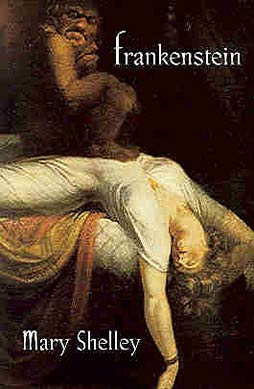 We all know who must have won Byron’s challenge. Mary Shelley was the only one to actually complete her “ghost story,” Frankenstein. It was unlike any ghost story ever written, however, because, instead of a bodiless soul, this “ghost,” was a reanimated body. Mrs. Shelley had turned the ghost story on its ear.
We all know who must have won Byron’s challenge. Mary Shelley was the only one to actually complete her “ghost story,” Frankenstein. It was unlike any ghost story ever written, however, because, instead of a bodiless soul, this “ghost,” was a reanimated body. Mrs. Shelley had turned the ghost story on its ear.
The Geneva Wager is a story you may have heard before. I remember hearing it when I first read Frankenstein as a teenager. It is, after all, where two monumental icons of 19th century horror originated. They are especially important icons for this time of year: Frankenstein’s monster and vampires are as essential to Hallowe’en as trick or treating. Yet one aspect of the story always eluded me: What were those stories that so captured the imagination of the Geneva circle that it would inspire monsters as enduring as the Creature and the Undead?
All I had to go on was Mary’s description, “Some volumes of ghost stories, translated from the German into French,” and a footnote describing the French title as Fantasmagoria. Even if I could find that tome, I don’t speak French! What is a linguistically impaired nerd to do? Eventually, of course, the Interwebs provided. It turns out Internet Archive (a rockin’ site that documents everything on the web and many things off it) has as a wonderful PDF scan of an 1813 edition, called Tales of the Dead. In it, you will find the two stories that Mary Shelley described. “The Death-Bride” (which she describes as “the History of the Inconstant Lover,” and “The Family Portraits,” (which she described in greatest detail) are particularly eerie tales that might keep you up at night, especially if you have a guilty conscience.
It, by Stephen King
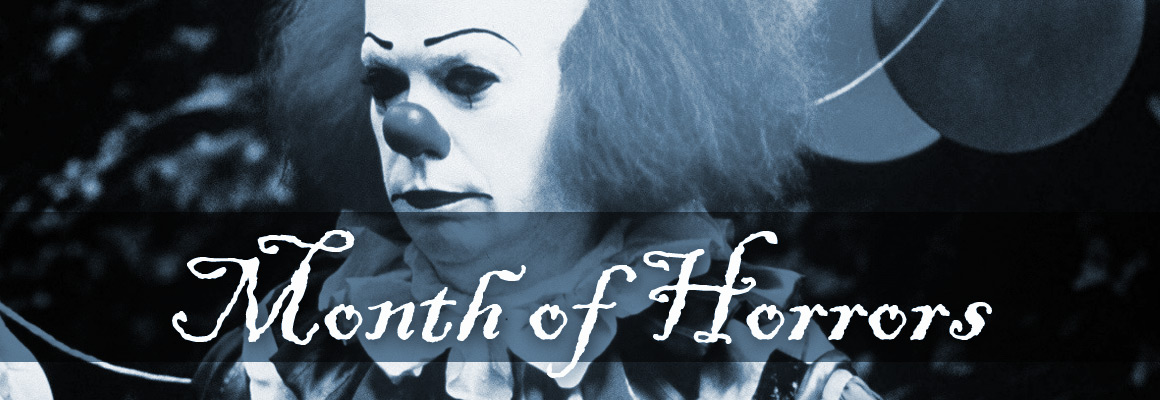
It’s always interesting to look at the stats on the WWEnd site, to see where visitors come from, what pages they like, how long they stay, and which areas are most popular. As it turns out, the most popular page on WorldsWithoutEnd.com is the novel page for It. While It is obviously a well-read novel—87 members have marked it as read, and 53 have rated it—the book remains unreviewed on our site. I thought that odd, and decided to make it a project for this year’s Month of Horrors to read and review Stephen King’s popular book. At 1090 pages, this was a daunting task, but King’s prose is rarely difficult to read, even if his subject matter is often repulsive, and I managed to complete it in about two weeks. After finishing this brick of a book, I think I have a better sense of why it’s as well loved as it is. That doesn’t mean I particularly love it, myself, but I think it might be constructive to explore why I do not. (Some revealing spoilers ahead, be warned.)
Carrie Trailer
I’ve never seen the original film, although I read the novel a few years back. Not my favorite King book, but I’d say that Chloë Moretz is the kind of actress who could pull this off, if anyone can.
Nightmare Magazine’s Top 100 Horror Books
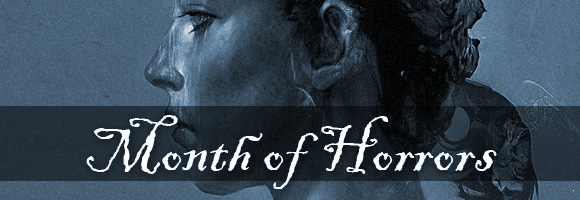
One of the things we really wanted to do for Month of Horrors was expand our selection of Horror novels on the site. Last year we added the Bram Stoker Award and the Horror Writers Association Reading List, and at the top of this month we added the Shirley Jackson Award. All great additions, of course, but we found ourselves wanting more. Our Horror selection is still dwarfed by Science Fiction and Fantasy, so we thought it would be great to add a new Horror-based reading list. Unfortunately, none of us running the show at WWEnd are experts in Horror, so any list we could have created would be a wild guess at best, or a hilarious mess at worst.
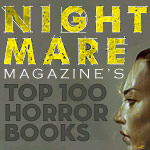 So we decided to consult the experts at Nightmare Magazine, instead.
So we decided to consult the experts at Nightmare Magazine, instead.
What we got back was a list of Nightmare Magazine’s Top 100 Horror Books, spanning everything from late gothic to splatterpunk, from killer clowns to devil babies, from vampire romance to vampire apocalypse. It’s like a synecdoche of the entire genre through it’s entire history, and we like to think it has a little something for everyone. Our thanks to Nightmare publishers John Joseph Adams and R. J. Sevin especially for creating this great list!
(Please note that many of the anthologies are included in the list in their entirety, not just as their first volumes. We will be adding the rest of the volumes to the WWEnd database over the next few days.)
Peruse the new list to see if there’s anything you want to add to your reading list. Remember, your Horror reviews posted on WWEnd throughout October will be considered for publication in the blog for the Month of Horrors.
The Owl Killers, by Karen Maitland
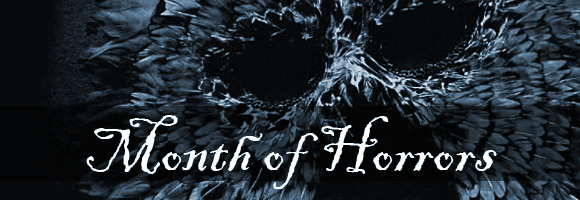
Today’s Month of Horrors review is from blogger and WWEnd member Valashain. This review originally appeared on his blog Val’s Random Comments, where he regularly reviews science fiction and fantasy books. The Owl Killers was a 2009 nominee for The Shirley Jackson Award.
The medieval period in Europe serves as an inspiration to many a fantasy novel. Apparently there is something very appealing to imagining oneself living in such an environment, so much so that our perception of the period has become more than a bit romanticized. In sharp contrast, history books tell us just how miserable and brutal life could be for a large part of the population. Historical fiction does not entirely escape the romanticizing of this period but quite a few novels attempt to paint a more realistic picture. Like Maitland’s previous book Company of Liars, The Owl Killers does not shy away form the harshness of life. Hunger, disease, natural disasters, oppressive taxation and unbridled religious madness, very little is spared the 14th century village the book depicts. It makes The Owl Killers in a very dark book. Fear is a main ingredient and the author makes sure the reader knows it.



















 Full Details
Full Details
